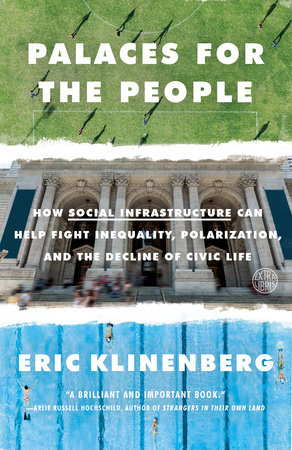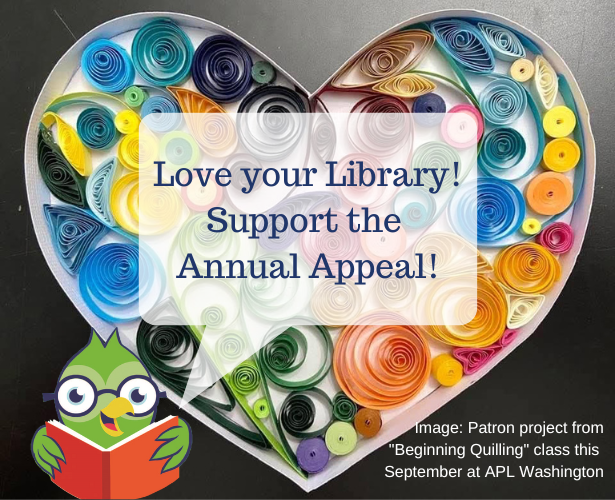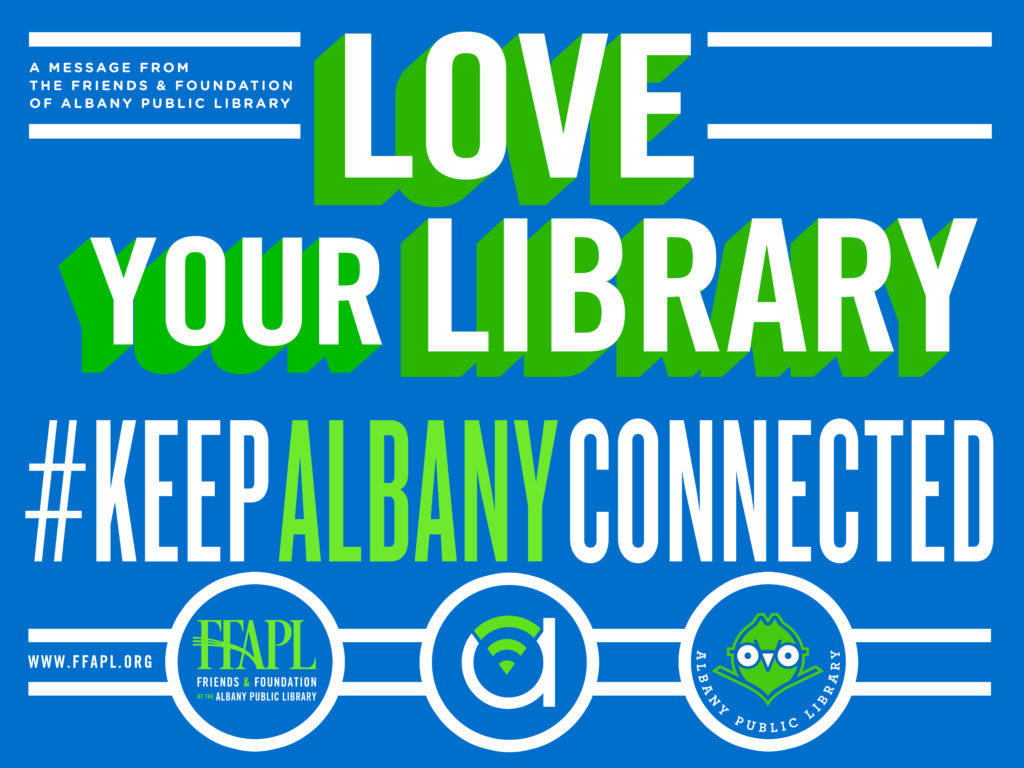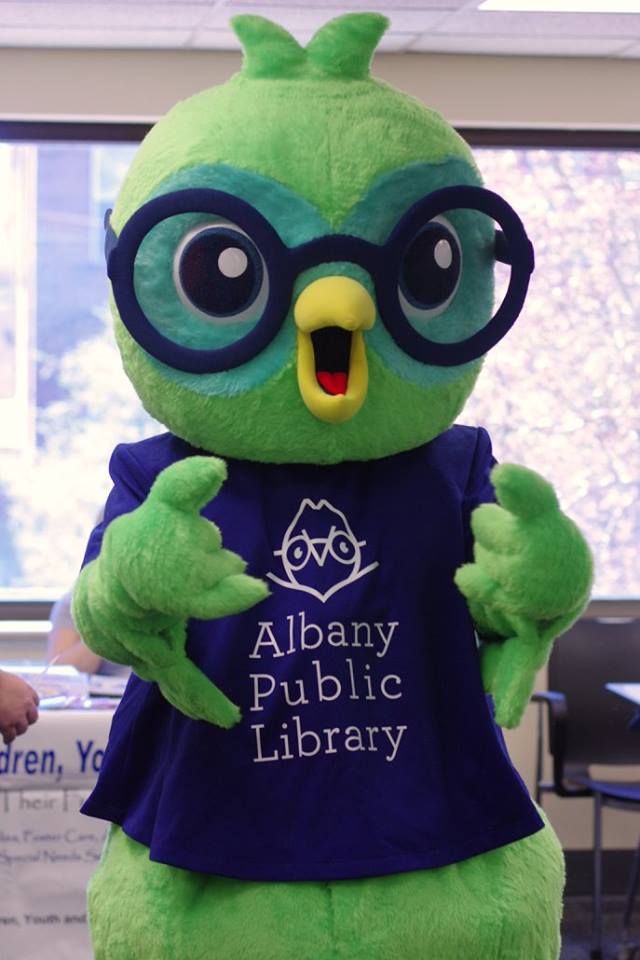FFAPL’s Tuesday Book Talks feature book reviews, author talks, and special presentations every week: same time, same place. When community members gather with us to enjoy cookies, coffee, and conversation, new connections are made and friendships are formed. In the book, Palaces for the People, we learn that “contact and conversation remind us of our common humanity, particularly when they happen recurrently, and when they involve shared passions and interests.”
The FFAPL Tuesday Book Talk series is a textbook example of positive social infrastructure in action. At the upcoming February 28 talk, Mary A. Rosch will review Palaces for the People: How Social Infrastructure Can Help Fight Inequality, Polarization, and the Decline of Civic Life by sociologist and author Eric Klinenberg. Klinenberg’s book explores the idea that the future of democratic societies relies on shared spaces that help us nurture our shared values. As threats to democracy mount and the division among our citizens deepens, it seems impossible to address these problems without addressing social infrastructure.
I spoke with Mary Rosch in advance of her upcoming discussion to learn how the themes in the book resonate in her own life. Mary is a yoga teacher as well as the Operations Coordinator at Discover Albany. As an Albany native and graduate of Albany public schools, she loves connection, books, and building community.

Chrissie Binney (CB): In Palaces for the People, Klinenberg refers to social infrastructure as the places where people gather and linger and make friends across group lines, which strengthens the entire community. Which public institutions, community spaces, or commercial establishments in Albany have you found to be best-suited to building community and connection?
Mary Rosch (MR): First, of course, the Albany Public Library– but, we can talk more about that on the 28th!
But, the space that most strengthens community and connection for me personally is the Honest Weight Food Co-Op. Growing up in Albany, just off Central Avenue, my mother would occasionally shop at the Co-op in its former location- just behind Family Dollar. In college I remember proudly bringing my
then-boyfriend, a health-conscious type, to the store to show it off. By the time I finally relocated back to the 518, after years spent living in Manhattan, we had become the grocery store mecca that we are today, with the notable additions of Whole Foods and Trader Joe’s to Price Chopper / Market 32, Hannaford, and ShopRite. I was grateful to have access to Whole Foods and Trader Joe’s here, but the Honest Weight Food Co-op (at its new home on Watervliet Avenue) was and remains my favorite place to shop.
Not only can I shop from their consciously chosen foods & products, but, while I’m at the Co-op I might run into friends, old & new, take a free class from a wide-range of subjects, listen to live music, or have a business meeting in the cafe. And, now after years as a yoga student in the community room, I teach my own class in that beloved space. Because of the Co-op my yoga class is offered at no charge, open to the public, and we even have mats and props for students!
While patrons and members of the Co-op share many values, there are plenty of opportunities to engage in discourse, disagree, or see a new perspective on any number of topics. And lastly the Co-op is constantly seeking to improve access to healthy food for the community where they are located, and the city of Albany on the whole. Recently a Free Food Fridge was added to the Co-op parking lot, and during the growing season there is a small kitchen garden, ripe for picking for anyone who wants some fresh vegetables. All of this only scratches the surface of the social infrastructure that Honest Weight Food Co-op provides!
CB: The book posits that, “For decades, building prisons for the poor has been our main crime reduction policy, and the social costs have been as great as the economic expense. If we want a better, more equitable, and sustainable solution for the challenges facing our cities and suburbs, we’d be better off building social infrastructure instead.” What social infrastructure changes do you think communities can make to become safer?
MR: One of the first steps in making communities safer is to ask the right questions, and to ask those questions to the communities one is seeking to change. I do not believe in evil. I do not believe there is anyone who wakes up in the morning wanting to bring harm and fear to their neighbor. So, if that is true, we must consider the conditions that exist that lead to neighborhoods becoming unsafe. Community input is essential.
If you are sick, and you go to the doctor and the doctor gives you medicine that only treats your symptoms, your sickness still remains. But if you go to the doctor, and the doctor looks at you holistically, and understands why your sickness is occurring, and together you get to the root of the problem, then you can find a solution (or likelier solutions) that will bring long-term change. Crime reduction requires holistic analysis, and nuanced treatment. For example, isolating guns as an issue might treat a symptom, but it won’t create lasting change. Crime isn’t the problem, it is only a symptom. And the treatment is likely a mix of social infrastructure- unique to each community. Maybe it’s more funding to the library so the branch can be open longer hours, maybe it’s making sure all the vacant lots are mowed during the summer, maybe it’s redesigning housing to support residents in a way that actually meets the needs of the most vulnerable in the area. Ultimately, the best social infrastructure to reduce crime will be designed with vision from the communities being served. One size will not fit all.
CB: Klinenberg points out that conditions in today’s society tend to “facilitate social bonding within certain groups, but makes social bridging difficult.” He gives examples from recent decades including the loss of ethnically diverse industrial towns, neighborhoods segregated by class, a polarized media environment, and even competitive youth sports that have become privatized. How can we encourage social bridging within our community and connect those who are dissimilar?
MR: To anyone reading this blog post– talk to your neighbors, put down your phone/tablet, turn off the TV, take a walk without earbuds in, sit out on your stoop, shop at the farmer’s market, go to the park, ride CDTA, use your library!, support your public schools, be an informed and active voter, volunteer in one of our community gardens, make eye contact with strangers- then smile at them, too. Change occurs moment by moment. We have so much agency in the small moments of our day to choose bridging.
Choose to see the humanity in every person you meet, every day- then find a small way to act on it.
CB: Klinenberg argues that libraries are among the most critical forms of social infrastructure that we have but also one of the most undervalued, since “so few influential people understand the role that libraries already play in modern communities, or the many roles they could play if they had more support.” Can you speak to the role libraries play in the Capital Region?
MR: If you were to sit at the main door of any branch of the Upper Hudson Library System and ask patrons as they exited the library what they did there today, you would have answers as diverse as the United States.
Yes, you can borrow books, and movies, and music. Yes, you can use the internet- via a library computer or wifi. But, you can also attend a program, get help with your resume & career, get help with your taxes, pick up a bus schedule, rent a large or small meeting space, pick up a number of useful forms, borrow a museum pass for sites near and far, view an art exhibit, read a newspaper or magazine, just be somewhere that isn’t home or work.
In addition to all of these services, there are so many unspoken ways our libraries support our communities. Caregivers of young children who first learn to socialize at the library, all of the students who are safe to hang out at the library right after school, all of the homeless patrons who come every day for a variety of reasons. Any of our library staff can speak to the many hats they wear as they serve the diverse needs and whims of the community.
To learn more, join us for Mary’s book review of Palaces for the People on February 28 at noon. FFAPL is pleased to offer a virtual viewing for this date as well, so we hope to see you either in-person at the Washington Ave Branch. Register on the Library Calendar to receive the Zoom Link.
The opinions expressed are solely those of the authors.
To learn more about How to Build a Community, visit Mary’s blog at https://radiantmary.substack.com



